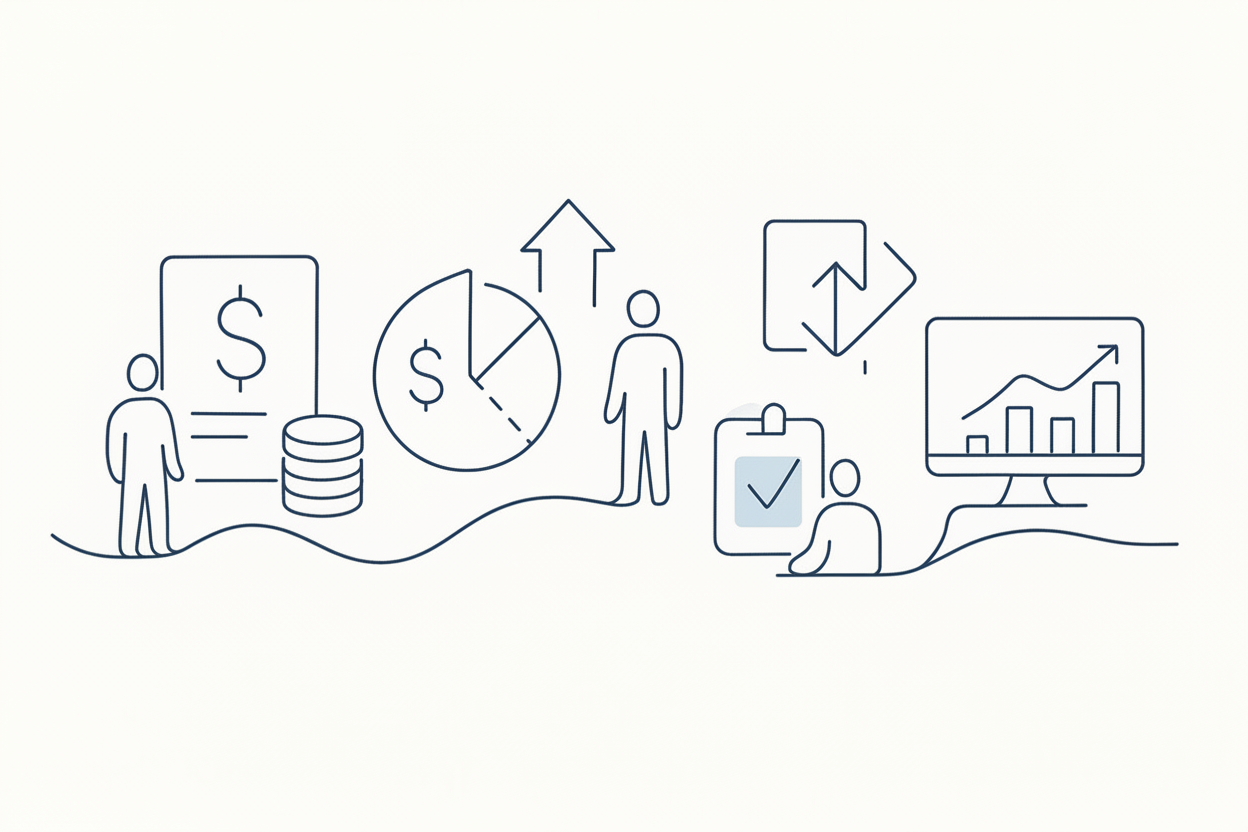Should US Treasury Revalue Gold Reserves

Analyzing the debate around updating America's outdated $42 statutory gold price and potential market impacts of revaluation.
The United States Treasury values its gold reserves at $42.22 per troy ounce—a statutory price established in 1973 that hasn't changed despite gold trading above $3,000 in 2025 markets. This dramatic disconnect between accounting price and market reality has sparked debate about whether revaluing official reserves would provide fiscal benefits or create destabilizing uncertainty in global markets.
Understanding the history behind this valuation, the potential impacts of changing it, and why it matters for gold traders provides context for monetary policy discussions and trading strategies around precious metals.
The $42 Statutory Price
When the US officially abandoned the gold standard in 1971 and formally delinked the dollar from gold in 1973, Congress established $42.22 as the statutory price for accounting purposes. This price served as a stable reference point for calculating the value of federal gold holdings on government balance sheets.
Why the Price Remains Unchanged
The statutory price hasn't updated because gold no longer functions as backing for the dollar or as a medium of exchange in the monetary system. Central banks hold gold as a reserve asset and mark it at acquisition cost for accounting purposes, but they don't actively trade or value it at market prices for monetary policy operations.
This differs fundamentally from the Bretton Woods era when dollars were convertible to gold at fixed rates, requiring accurate gold valuations to maintain monetary system credibility. Once that convertibility ended, the specific accounting price became less relevant to actual monetary operations.
The Revaluation Proposal
Advocates for revaluing federal gold reserves argue that marking the approximately 261.5 million ounces held by the US government at current market prices would:
- Create nearly $800 billion in additional balance sheet value
- Improve debt-to-asset ratios without increasing actual liabilities
- Provide fiscal flexibility for addressing budget challenges
- Acknowledge the true value of national assets in financial statements
From a pure accounting perspective, this revaluation seems straightforward—simply update the price to reflect reality. However, the practical implications extend far beyond balance sheet adjustments.
Potential Benefits
If the Treasury revalued gold reserves to market prices, several potential benefits might emerge:
Improved Fiscal Metrics: Debt-to-asset ratios would improve dramatically, potentially affecting credit ratings and borrowing costs. While total debt wouldn't decrease, the apparent strength of the federal balance sheet would increase.
Strategic Flexibility: The enhanced balance sheet value could theoretically enable new fiscal tools or provide psychological confidence in the government's financial position during crises.
Market Confidence: Explicitly recognizing gold's value might signal commitment to sound money principles and confidence in gold as a long-term store of value, potentially supporting market prices.
Potential Risks
The arguments against revaluation focus on the uncertainty and volatility such a policy shift might create:
Market Disruption: If the US government suddenly marked gold at $3,000+ per ounce, it could trigger speculation about whether this presages a return to gold-backed currency or represents preparatory steps toward selling reserves. The uncertainty alone could cause substantial volatility in both gold and currency markets.
Inflationary Signals: Markets might interpret revaluation as an admission that the dollar has lost substantial purchasing power relative to gold—essentially confirming inflation concerns and potentially triggering further dollar weakness.
International Implications: Other central banks might feel pressure to revalue their reserves, creating coordination challenges and potential competitive devaluations as countries seek to optimize their financial positions.
Valuation Volatility: Unlike the fixed $42 price, market-based valuation would fluctuate daily with gold prices. Federal balance sheets would show enormous swings in asset values based on commodity market movements rather than actual changes in fiscal position.
Historical Context
The US depegged from gold specifically to enable monetary policy flexibility unconstrained by physical gold reserves. Bretton Woods collapsed because the rigid gold-dollar link prevented appropriate policy responses to changing economic conditions.
Why Gold Backing Ended
When every dollar required gold backing, the money supply couldn't expand to meet economic growth without acquiring more gold. This constraint became untenable as the global economy grew faster than new gold production, creating deflationary pressures that hindered commerce.
By ending gold convertibility, the Federal Reserve gained ability to expand or contract money supply based on economic conditions rather than the arbitrary constraint of gold reserves. This flexibility enabled more active management of inflation, employment, and financial stability.
The Role of Gold Today
Modern central banks hold gold for diversification, crisis reserves, and confidence signaling rather than as monetary system backing. Gold provides a non-correlated asset that performs well during currency crises or geopolitical stress, functioning as insurance rather than operational reserves.
The approximately 8,133 tonnes of gold held by the US represents about 67% of official reserves—a higher percentage than most other central banks. However, this gold isn't actively managed or traded; it simply sits in vaults at Fort Knox and other locations as a strategic asset.
Market Impact Scenarios
If the Treasury did revalue gold reserves, several market scenarios could unfold:
Gold Price Surge
The most commonly predicted outcome involves gold prices skyrocketing as the revaluation signals official recognition of gold's monetary importance. If the US government takes the unprecedented step of updating its gold valuation after 50+ years, markets might interpret this as preparation for expanded gold's role in the monetary system.
Traders would rush to establish long positions anticipating either government purchases to increase reserves or eventual return to some form of gold-backed currency. This speculative surge could push prices well above current levels regardless of fundamental supply-demand dynamics.
Dollar Weakness
Conversely, explicit acknowledgment that gold has appreciated 70-fold since the statutory price was set might be interpreted as dollar weakness admission. If gold went from $42 to $3,000+ while the dollar was supposedly stable, revaluation highlights the currency's loss of purchasing power.
This could trigger dollar selling as investors seek alternative stores of value, creating a feedback loop where dollar weakness drives further gold appreciation, justifying even higher revaluation figures.
Multi-Year Volatility
Perhaps the most likely outcome involves extended period of uncertainty as markets struggle to determine the revaluation's implications. Without clear signals about whether this represents policy pivot or mere accounting adjustment, prices would likely experience heightened volatility across currencies, commodities, and fixed income markets.
The risk of this extended uncertainty arguably outweighs potential benefits from improved balance sheet optics, explaining why the Treasury has consistently dismissed revaluation proposals.
Fort Knox Verification
Adding intrigue to the revaluation debate, both President Trump and Elon Musk have expressed interest in personally visiting Fort Knox to verify the gold reserves actually exist. While official audits regularly confirm the holdings, public skepticism occasionally surfaces questioning whether the reported reserves match physical inventory.
Conspiracy Theories
Various conspiracy theories suggest federal gold reserves have been sold, leased, or otherwise encumbered without public disclosure. These theories typically lack credible evidence but gain traction during periods of monetary policy stress or currency devaluation.
If a high-profile verification revealed discrepancies between reported and actual holdings, it would trigger immediate crisis in gold markets and dollar confidence. Conversely, transparent verification confirming reserves might paradoxically support revaluation arguments by establishing the physical basis for higher valuations.
Trading Implications
For gold traders, the revaluation debate creates several considerations:
Volatility Premiums
Any serious political movement toward revaluation would likely increase gold options implied volatility as traders pay premiums for protection against large moves in either direction. Options strategies that benefit from elevated volatility become attractive when revaluation discussions intensify.
Directional Bias
The consensus expectation that revaluation would ultimately support gold prices creates bullish bias when such proposals gain political traction. However, traders should recognize that policy discussions often generate more noise than actual change, leading to false breakouts.
Dollar Correlation
Gold's inverse correlation with the dollar becomes even more relevant in revaluation scenarios. Traders might structure pairs trades going long gold and short dollar simultaneously to capture the relative value shift while hedging broader market movements.
Automated Strategy Adjustments
For traders using automated systems through platforms like TradersPost, incorporating news sentiment analysis around revaluation discussions could trigger position sizing adjustments or temporary strategy pauses during high-uncertainty periods.
The Broader Monetary Debate
The revaluation discussion reflects larger debates about monetary policy, government debt sustainability, and the dollar's role as global reserve currency. Proponents of sound money principles view revaluation as acknowledging economic reality, while skeptics see it as accounting gimmickry that changes nothing fundamental.
Modern Monetary Theory
Some economists argue that sovereign governments issuing debt in their own currency face no binding budget constraints and can always create money to service obligations. From this perspective, gold reserve valuations become irrelevant—the government's ability to create dollars matters far more than assets backing those dollars.
Austrian Economics
Alternative schools of thought emphasize that monetary expansion without corresponding real asset backing inevitably produces inflation and economic distortion. These frameworks view gold as a disciplining mechanism that prevents unlimited money creation and encourages fiscal responsibility.
The revaluation debate thus touches on fundamental questions about monetary system design that extend far beyond the narrow technical question of how to account for gold reserves.
Conclusion
The US Treasury's $42 statutory gold price remains unchanged 50+ years after establishment because gold no longer serves as monetary system backing. Revaluing reserves to market prices would create approximately $800 billion in balance sheet value but risk generating destabilizing uncertainty about the implications of such a move.
The Treasury has consistently dismissed revaluation proposals, likely recognizing that potential benefits from improved accounting metrics pale compared to risks of multi-year volatility as markets struggle to interpret policy intentions. The current system—where gold serves as crisis reserves valued at historical cost—functions adequately without requiring market-price adjustments.
For gold traders, the revaluation debate represents more of a thought experiment than imminent policy change. However, understanding these dynamics provides context for interpreting gold price movements during periods of monetary policy uncertainty or dollar weakness.
Whether through direct gold exposure, futures contracts, or automated strategies via platforms like TradersPost, traders benefit from recognizing that gold's role in the modern monetary system reflects confidence reserve and inflation hedge rather than active backing for currency. The revaluation debate highlights this distinction while creating occasional trading opportunities when political discussions temporarily influence market sentiment.




